Papers
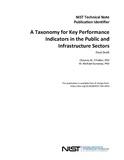
|
A Taxonomy for Key Performance Indicators in the Public and Infrastructure Sectors | |
| This document presents a taxonomy for key performance indicators (KPIs) tailored to the public and infrastructure sectors. An approach to classify KPIs is outlined and then followed, aiming to enhance the accuracy and utility of performance measurement in these sectors. Through an iterative development process, this taxonomy addresses the structural determinants of transaction costs that impact the accessibility and analytical utility of KPIs. The document serves as a resource for economists, social scientists, and decision-makers, facilitating informed decisions and improvements in public and infrastructure services. This taxonomy not only aids in navigating the complexities of KPI application but also promotes standardization and effective communication across government organizations and communities. The development and implications of this taxonomy are demonstrated using actual public safety and resilience focused data from Portland, OR. The taxonomy has the potential to be adapted and applied to different contexts within the public and infrastructure sectors to improve performance measurement activities. | ||
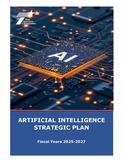
|
Artificial Intelligence Strategic Plan Fiscal Years 2025-2027 | |
| The AI Strategic Plan establishes a vision, principles, and roadmap to integrate advanced analytics and intelligent systems into TxDOT's operations and transportation system. | ||
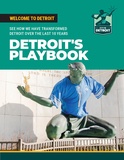
|
Detroits Playbook | |
| Detroit moves from bankruptcy to "investment grade" credit rating in less than 10 years | ||
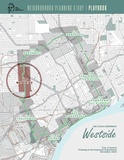
|
Detroit Neighborhoods Playbook | |
| A playbook is a roadmap with immediate next steps that residents, business owners and neighborhood organizations can take to leverage the investments of the Joe Louis Greenway in their neighborhoods. These steps are not isolated but are meant to meet the goals set forth in the Joe Louis Greenway Framework Plan of 2021, and the specific goals for the JLG Westside Planning Area defined in this process. | ||
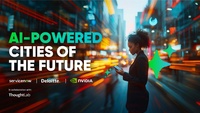
|
AI Powered Cities of the Future | |
| Artificial intelligence (AI) is revolutionizing how cities analyze data, create content,
and perform tasks, allowing them to boost productivity, drive efficiencies, and better meet the needs of residents and citizens. | ||
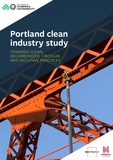
|
Portland clean industry study | |
| In 2021, the concept of a “Clean Industry Hub” was suggested as a way to address industrial and institutional emissions while improving profitability, inclusive prosperity, and environmental co-benefits. Under the leadership of Commissioner Carmen Rubio,
the Bureau of Planning and Sustainability secured funds to explore the hub concept – whether that be a physical space, virtual space, or combination. The project included two components: an Assessment process to consider current conditions, global hub models, and policy and finance tools, and a Roadmap process to identify priority strategies moving forward. The Assessment and Roadmap were guided by an Advisory Group of 28 leaders representing private, public, nonprofit, and academic sectors. This document shares the Assessment and Roadmap findings. | ||
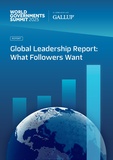
|
Global Leadership Report 2025 | |
| Today’s leaders face profound and complex challenges, such as climate change, conflict and artificial intelligence, and must make decisions that affect the lives of their followers. In this changing world, it is crucial for leaders to understand the reasons people follow them.
Gallup’s latest study, based on surveys conducted in 52 countries, builds on decades of our research into what people need from their leaders. More than anything, the data confirm that followers need a sense of hope from their leaders. Trust is the second most important need, followed by compassion, then stability. These four needs are consistent, irrespective of country, demographics or the type of leader in question. These needs are also linked to wellbeing: The more needs leaders meet, the more suffering is reduced. | ||

|
Extended Reality Telehealth for Rural Spaces | |
| Rural Americans encounter substantial healthcare disparities when compared to urban counterparts, including provider shortages, less access to specialists, and higher mortality risks from various chronic and acute conditions. While 13.8% of the U.S. population lives in rural areas, rural regions comprise two-thirds of healthcare provider shortage areas. Accordingly, broadband-enabled telehealth that mitigates barriers to healthcare access can be a transformative solution for patients and physicians in rural areas.
Emerging telehealth platforms extend beyond traditional video consultations, incorporating extended reality (XR) technologies comprising virtual reality (VR) and alternative reality (AR) solutions. Additionally, artificial intelligence (AI) promises unique diagnostic and epidemiological benefits for care management. These technologies collectively offer advancements for mental health treatment, physician training, and personalized care management. Rural broadband infrastructure is critical to enabling these technological healthcare innovations, representing a key pathway to improving medical access and patient outcomes for rural users. | ||

|
Micro-Delivery Hub Feasibility Study | |
| This report examines the potential for implementing zero-emissions micro-delivery hubs in Portland to reduce carbon emissions, improve air quality, and enhance safety in urban logistics. Transportation, particularly medium- and heavy-duty vehicles, remains a major contributor to Oregon's greenhouse gas emissions, with significant impacts on low-income and BIPOC communities. Driven by Portland’s Climate Emergency Declaration and the 2040 Freight Plan, this study explores micro-delivery solutions, such as cargo bikes and small electric vehicles, as alternatives to diesel-powered freight trucks. Drawing insights from cities like Boston and New York, the report evaluates Portland’s existing transportation and land-use policies, identifies zoning and regulatory challenges, and proposes pilot projects and code adjustments to support a cleaner, safer, and more sustainable urban delivery network. | ||
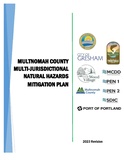
|
Multnomah County Multi-Jurisdictional Natural Hazards Mitigation Plan | |
| The update to the Multnomah County Multi-Jurisdictional Natural Hazards Mitigation Plan (NHMP) was adopted by resolution of the Multnomah County Board on October 13 2024. The final version of the plan is posted below, and incorporates comment from the Oregon Department of Emergency Management (OEM) and Federal Emergency Management Agency (FEMA). The plan received final federal review approval on August 24, 2023, and may be now be adopted by all of the participating jurisdictions and districts. A list of adoption dates by each multi-jurisdictional partner will be added to this page soon. This plan update was built through stakeholder input, public comment, and the most up-to-date studies and research about natural hazard risk in Multnomah County. | ||

|
Internet of Things (IoT) Advisory Board (IoTAB) Report 2024 | |
| The world is undergoing a fourth industrial revolution, driven by the economic, societal, and cultural innovations of the Internet of Things (IoT). This revolution combines connectivity and digital innovation with the physical world to accelerate economic, environmental, and social benefits across the world.
The United States is at a critical juncture: the Internet of Things (IoT) is rapidly evolving and presents a historic opportunity to leverage American innovation and ingenuity to sustain economic leadership and accelerate achievement of societal benefits. IoT adoption is not just an option; it is an imperative for the United States to lead with vision. It’s a call to embrace a future where connectivity transcends borders and global trade, driving our economy to new heights, fostering societal wellbeing, and ensuring that America remains at the forefront of global innovation. | ||

|
Disruptions on the Horizon | |
| Today, the world faces multiple complex crises that can contribute to unexpected disruptions. The Disruptions on the Horizon report stems from a critical question many decision makers grapple with: what disruptions should we anticipate next?
The Disruptions on the Horizon 2024 report identifies and assesses 35 disruptions for which Canada may need to prepare and explores some of the interconnections between them. These disruptions are potential events and circumstances that could affect our society and the way it functions, as well as the way people live, work, and connect. Their impacts can be perceived as positive or negative, depending on one’s perspective. While the disruptions presented in this report are not guaranteed to occur, they are plausible. Neglecting to consider them may lead to policy failure and missed opportunities. Thinking through possible disruptions when developing policies, programs, and strategies could help seize opportunities, navigate impacts, and minimize risks. | ||
| Semiconductor Workforce and Talent Assessment | ||
| The report provides an overview of Oregon’s semiconductor industry and workforce. | ||
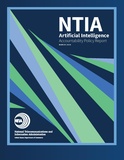
|
Artificial Intelligence Accountability Policy Report | |
| Artificial intelligence (AI) systems are rapidly becoming part of the fabric of everyday American life. From customer service to image generation to manufacturing, AI systems are everywhere.
Alongside their transformative potential for good, AI systems also pose risks of harm. These risks include inaccurate or false outputs; unlawful discriminatory algorithmic decision making; destruction of jobs and the dignity of work; and compromised privacy, safety, and security. Given their influence and ubiquity, these systems must be subject to security and operational mechanisms that mitigate risk and warrant stakeholder trust that they will not cause harm. | ||
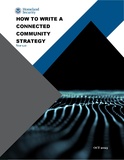
|
DHS Guidebook on How to Write a Connected Community Strategy | |
| The U.S. Department of Homeland Security (DHS) has partnered with representatives from New York (NY), San Jose (CA), Memphis (TN), Chattanooga (TN), and Colorado State University to develop this "how to" guide to help community leaders build a digital transformation strategy. Contributors include chief information officers, chief information security officers, chief privacy officers, economists, technology experts, cyber policy professionals, risk analysts, and former municipal executives, each with unique experience driving community digital transformations. This foundational guide is the first in a series of guides that DHS hopes will help communities achieve their connected community goals. | ||
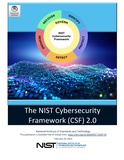
|
NIST Cybersecurity Framework 2.0 | |
| The National Institute of Standards and Technology (NIST) has updated the widely used Cybersecurity Framework (CSF), its landmark guidance document for reducing cybersecurity risk. The new 2.0 edition is designed for all audiences, industry sectors and organization types, from the smallest schools and nonprofits to the largest agencies and corporations — regardless of their degree of cybersecurity sophistication. | ||
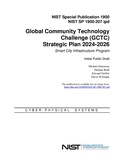
|
Global Community Technology Challenge (GCTC) Strategic Plan 2024-2026 | |
| This publication provides a Strategic Plan for the Smart City Infrastructure (SCI) program of the Communications Technology Laboratory at the National Institute for Standards and Technology (NIST), the research laboratory of the U.S. Department of Commerce. The SCI program manages the Global Community Technology Challenge (GCTC), a nationwide public-private partnership of cities and communities; local and state government agencies; and private-sector for-profit and non-profit entities.
This strategy is based on a consensus planning process chartered by the NIST SCI program in collaboration with the leadership of twelve GCTC technology sectors (i.e., working groups), who collectively represent over 220 regions, cities and communities that have initiated smart city programs or projects as GCTC member communities. | ||
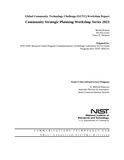
|
Global Community Technology Challenge (GCTC) Workshop Report | |
| The goal of the workshop series was to generate a community-focused perspective aligned with and in support of the federally led NIST Smart City Infrastructure program. The specific objective of the meetings was to solicit GCTC leadership input to articulate vision and mission statements as well as to identify forward looking goals and activities for the volunteer organization to inform a community-based strategy for the GCTC, as well as smart and connected communities across the nation. | ||
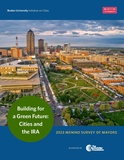
|
Building for a Green Future: Cities and the IRA | |
| Passed in 2022, the Inflation Reduction Act (IRA) features unprecedented federal investment in environmental initiatives. It provides around $370 billion in resources for clean energy technology. These investments come primarily in the form of tax credits and grants available to state and local governments, nonprofits, and individual households.
For example, the Solar for All program “provide[s] up to 60 grants to States, Tribal governments, municipalities, and nonprofits to expand the number of low-income and disadvantaged communities that are primed for residential and community solar investment — enabling millions of families to access affordable, resilient, and clean solar energy.” Despite these massive investments, the Biden Administration has expressed growing concerns and frustration about the slow pace with which federal dollars are translating into concrete projects. | ||

|
Digital Twin Stakeholders | |
| This paper has been written and developed in support of Decarbonizing the Built World: A Call to Action, an owner or occupier-led implementation of digital twin-related capabilities required to support the decarbonization of new and existing buildings.
It specifically addresses the role of the stakeholder in this process. The order of stakeholder engagement is a function of when key decision makers identify goals relating to the improvement of building performance. | ||

|
Artificial Intelligence Risk Management Framework (AI RMF 1.0) | |
| Artificial intelligence (AI) technologies have significant potential to transform society and people’s lives– from commerce and health to transportation and cybersecurity to the environment and our planet. AI technologies can drive inclusive economic growth and support scientific advancements that improve the conditions of our world. AI technologies, however, also pose risks that can negatively impact individuals, groups, organizations, communities, society, the environment, and the planet. Like risks for other types of technology, AI risks can emerge in a variety of ways and can be characterized as long- or short-term, highor low-probability, systemic or localized, and high- or low-impact. | ||

|
Public sector procurement fit for the digital age | |
| In this paper we identify some common hindrances in procurement practices that result in lessthan-optimal outcomes for public sector customers seeking to embrace digital transformation, and which also present challenges for cloud service providers looking to partner with the public sector. | ||
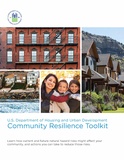
|
HUD-Community-Resilient-Toolkit.pdf | |
| The U.S. Department of Housing and Urban Development (HUD) Resilience Toolkit (Toolkit) is designed to assist communities in enhancing their resilience to climate-related natural hazard risks. Although not the focus of this toolkit, consideration of other hazards, risks, and stresses may also enhance resilience. | ||
| [[File:|200px|x160px|link=[[Media:]]]] | Cloud vs. Edge AI | |
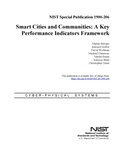
|
Smart Cities: A Key Performance Indicators Framework | |
| This publication presents research findings and scientific work that advance the development and progression of smart city and community measurement methodology. The term 'smart,' as used in the phrase 'smart cities,' is defined here as the efficient use of digital technologies to provide prioritized services and benefits to meet community goals. | ||
| [[File:|200px|x160px|link=[[Media:]]]] | Regenerative living cities and the urban climate–biodiversity–wellbeing nexus | |
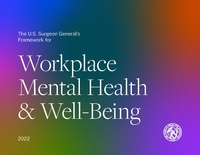
|
Workplace Mental Health & Well-Being | |
| This Framework is dedicated to all workers who lost their lives during the pandemic and to their families. May this serve as a call to action to lift up the voices of workers, particularly those most vulnerable, and to protect their health and well-being. | ||
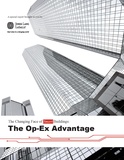
|
The Changing Face of Smart Buildings | |
| This marquee project received considerable attention because it was an integrated energy retrofit of a significant building, according to Dan Probst, who heads JLL’s technical operations. Less visible, says Probst, were the many smart building components installed in the iconic structure. | ||
| [[File:|200px|x160px|link=[[Media:]]]] | Smart city reporting | |
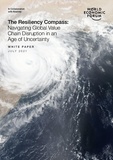
|
The Resiliency Compass | |
| Next generation operations and supply chain leaders will be defined by their ability to withstand and quickly adapt to increasingly disruptive headwinds. | ||
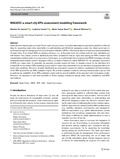
|
Smart city KPIs assessment | |
| [[File:|200px|x160px|link=[[Media:]]]] | A novelist’s vision of the virtual world has inspired an industry | |
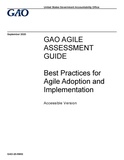
|
GAO Agile Assessment Guide | |
| This Agile Guide is intended to address generally accepted best practices for Agile adoption, execution, and control. In this guide, we use the term best practice to be consistent with the use of the term in GAO’s series of best practices guides. | ||

|
Beaverton Annual Report and Five Year Action Plan | |
| Urban renewal in Beaverton is guided by seven goals, included in the voter-approved Central Beaverton Urban Renewal Plan. These goals inform project funding and are the basis for developing programs, creating strategies, and laying the groundwork for reporting how urban renewal resources perform over time. | ||
| [[File:|200px|x160px|link=[[Media:]]]] | RCSTSS 2016 | |
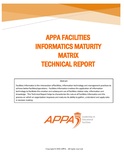
|
APPA Facilities Informatics Maturity Matrix Technical Report | |
| Facilities Informatics is the intersection offacilities, information technology and management practices to achieve betterfacilities/operations. Facilities Informatics involves the application of information technology to facilitate the creation and subsequent use of facilities related data, information and knowledge. This Technical Report helps to characterize the nature of Facilities Informatics and the process on which an organization improves and matures its ability to gather, understand and apply data in decision making. | ||
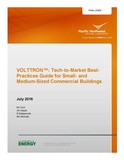
|
VOLTTRON | |
| VOLTTRON™ is an open-source distributed control and sensing platform developed by Pacific Northwest National Laboratory for the U.S. Department of Energy. It was developed to be used by the Office of Energy Efficiency and Renewable Energy to support transactive controls research and deployment activities. | ||

|
Framework for Cyber-Physical Systems | |
| Cyber-physical systems (CPS) are smart systems that include engineered interacting networks of physical and computational components. CPS and related systems (including the Internet of Things (IoT) and the Industrial Internet) are widely recognized as having great potential to enable innovative applications and impact multiple economic sectors in the worldwide economy. | ||
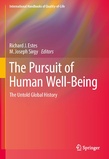
|
Pursuit of Human Well-Being | |
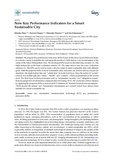
|
New Key Performance Indicators | |
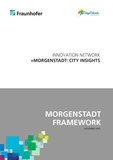
|
Morgenstadt Framework | |
| The "Morgenstadt Framework" is an early version of what is to become the Fraunhofer Morgenstadt approach to analyse cities upon their sustainability performance. The full version will be published as my PhD in 2016. | ||
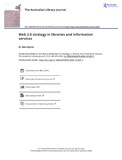
|
Web 2.0 strategies in libraries and information services | |